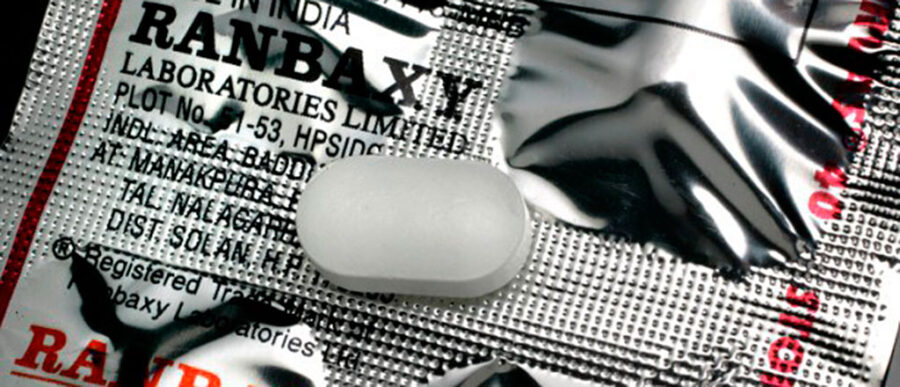Indian pharmaceutical firm Ranbaxy Laboratories has struggled ever since its promoter family sold controlling interest in the company to Japan’s Daiichi Sankyo in 2008. No one, however, expected the Japanese pharma major to give up the fight. In an announcement made on April 7, Daiichi said that its board would vote in favor of accepting an offer by Sun Pharmaceutical Industries – Inida’s largest drugmaker by market value – to buy Ranbaxy.
It has been an expensive ride for the Japanese company. Daiichi now owns 63.4% of Ranbaxy. After the $4 billion deal (including $800 million in debt) is consummated – expected to happen by the end of the calendar year – it will have a 9% stake in Sun, valued at around $2 billion. That is less than half the $4.2 billion it paid for Ranbaxy in 2008. “Daiichi has lost out,” Ramesh Adige, former executive director of Ranbaxy, told television channel NDTV.
Was it expected? Sun has been eyeing the Japanese market, which always has been difficult to enter. A month earlier, Reuters had reported that Sun was “looking for partnerships or acquisitions to enter Japan, an especially lucrative market for manufacturers of low-cost drugs.” However, most analysts were surprised by the deal.
Ranbaxy shareholders will get eight shares of Sun Pharma for every 10 shares of Ranbaxy they hold. This exchange ratio represents an implied value of Rs. 457 for each Ranbaxy share, a premium of 18% to Ranbaxy’s 30-day average share price and 24.3% to the 60-day average share price. The deal values Ranbaxy at $3.2 billion.
Ranbaxy is, in fact, marginally the larger of the two in terms of sales. But in terms of market capitalization, Sun is far ahead. The day the deal was announced, Sun’s share price went up 2.68% on the Bombay Stock Exchange, while Ranbaxy’s dropped 3.12%.
Trouble for Ranbaxy
Meanwhile, Ranbaxy has been facing sanctions from the U.S. Food and Drug Administration (FDA). In January, the FDA prohibited Ranbaxy’s Toansa (in north India) facility from producing and distributing drugs for the U.S. market. According to the FDA: “The Toansa facility is now subject to certain terms of a consent decree of permanent injunction entered against Ranbaxy in January 2012. The decree contains, among other things, provisions to ensure compliance with current good manufacturing practice (CGMP) requirements at Ranbaxy facilities in Paonta Sahib and Dewas, India, as well as provisions to address data integrity issues at those facilities. In September 2013, the FDA added Ranbaxy’s Mohali facility to the CGMP provisions of the decree.” This means that four of Ranbaxy’s India units are affected by the FDA’s moves.
“Daiichi has not been able to do justice to the opportunity and potential that was there in Ranbaxy.” –Malvinder Singh
In May 2013, the FDA had reached a settlement with Ranbaxy. Under the settlement, Ranbaxy’s U.S. subsidiary — Ranbaxy USA, Inc. — agreed to plead guilty to violations of the Federal Food, Drug and Cosmetic Act. These related to “the manufacture and distribution of certain adulterated drugs made at two of Ranbaxy’s manufacturing facilities in India.” Ranbaxy agreed to pay a criminal fine and forfeiture totaling $150 million and to settle civil claims for $350 million. “The announcement marks the resolution of this past issue,” Arun Sawhney, Ranbaxy CEO and managing director, had told Knowledge at Wharton at the time. (See: “Trouble in India for Ranbaxy after $500 million U.S. Penalty”)
“We are confident that Sun Pharma is the ideal partner to help us realize our full potential and are excited to participate in future value creation opportunities,” says Sawhney today.
Dilip Shanghvi, managing director of Sun, is equally upbeat. “Ranbaxy has a significant presence in the Indian pharma market and in the U.S. where it offers a broad portfolio of ANDAs (abbreviated new drug applications) and first-to-file opportunities. In high-growth emerging markets, it provides a strong platform which is highly complementary to Sun Pharma’s strengths. We see tremendous growth opportunities and are excited with the prospects to create lasting value for both our shareholders through a successful combination of our franchises.”
Reaching Critical Mass
The union of Ranbaxy and Sun will create India’s largest pharmaceutical company –displacing Abbott Labs — and the world’s fifth largest specialty generic company, according to J.N. Mukhopadhyay, dean of the Kolkata-based Globsys Business School’s global campus. “As it is an all-stock deal, the risk will continue to be shared by Ranbaxy shareholders after the deal is consummated,” he notes.
“Pharmaceutical companies in this country are small by global standards. This creates a giant with potential.” –J.N. Mukhopadhyay
Observers have noted, however, that Shanghvi has mitigated some of that risk in structuring the deal. The agreement refers specifically to the FDA strictures on the Toansa facility: “In connection with the transaction, Daiichi Sankyo has agreed to indemnify Sun Pharma and Ranbaxy for, among other things, certain costs and expenses that may arise from the subpoena.”
“I heard this morning of Ranbaxy and Sun coming together,” former Ranbaxy chairman Malvinder Singh told a TV channel. “I think it’s a very positive move. Daiichi has not been able to do justice to the opportunity and potential that was there in Ranbaxy. Over the past six years, Daiichi has failed to run Ranbaxy successfully.”
Daiichi’s surrender will give ammunition to those who feel that Japanese managers just can’t cope with the complexities in India. India’s top carmaker Maruti has been facing a succession of labor problems in recent times. “It is an open secret that Japanese managers just don’t understand the Indian situation,” says Ravi Venkatesan, former chairman of Microsoft India. With Shanghvi at the helm, the merged entity may go places. Daiichi has taken a hit today; the value of the Sun stock they will hold is valued at just about $2 billion. But the Japanese can hope that, with the evident synergies in the merger, their investment may break even in the future. What they have lost is management control; they are allowed to appoint only one director on the board of the merged entity.
“The merger is good news for India,” says Mukhopadhyay. “Pharmaceutical companies in this country are small by global standards. This creates a giant with potential.”



